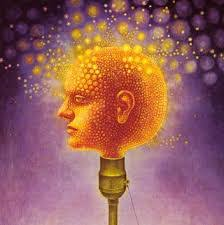 In August 1960, Timothy Leary (a Harvard professor) traveled to Mexico to explore the ceremonial use of psilocybin mushrooms by the indigenous Aztecs.
In August 1960, Timothy Leary (a Harvard professor) traveled to Mexico to explore the ceremonial use of psilocybin mushrooms by the indigenous Aztecs.
It was there that he ate the psychedelic mushrooms for the first time. It was, he wrote, life-changing. He said he learned more about his “brain and its possibilities” in particular and about psychology generally than he had learned “in the preceding fifteen years of studying and doing research in psychology.”
When he got back to Harvard, Leary and his associates, notably Richard Alpert (later known as Ram Dass), began The Harvard Psilocybin Project. The goal was to determine if psychedelic substances could alter human behavior in beneficial ways.
Their first subjects were convicted criminals. Most of them, Leary and Alpert reported, felt they had “mystical” or “spiritual” experiences while taking the drugs. This got the attention of Alan Ginsberg, the poet, who then joined the team. Bolstered by Ginsberg’s support, the project became a cause célèbre of artists and intellectuals.
The project was expanded to theology students and then to graduate students, writers, and philosophers. According to Leary’s autobiography, Flashbacks, LSD was given to 300 subjects. Two hundred and twenty-five of them described their experiences as significant, revelatory, educational, and/or transformative.
In 1964, Leary and Alpert (along with Ralph Metzner) coauthored a book titled The Psychedelic Experience. In it, they wrote:
A psychedelic experience is a journey to new realms of consciousness. The scope and content of the experience is limitless, but its characteristic features are the transcendence of verbal concepts, of space-time dimensions, and of the ego or identity. READ MORE
 MarkFord
MarkFord